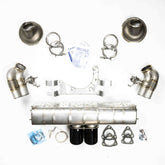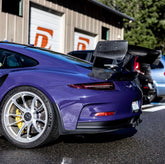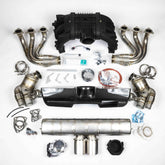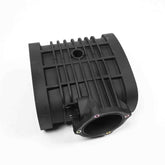Understanding Porsche Upper Strut Mounts and Camber Plates
Porsche vehicles are renowned for their high-performance engineering, and modifications such as camber plates (also known as upper strut mounts) can further enhance their handling capabilities. These components play a crucial role in fine-tuning a car’s suspension geometry, making them essential for enthusiasts who engage in spirited driving or track events. In this article, we will explore the function, benefits, and implications of upgrading to aftermarket camber plates, specifically for Porsche models such as the 991, 718, and 981.
To the Camber Plates product page.
For the original discussion and detailed insights, watch the full video here: Porsche Upper Strut Mounts Camber Plates.
What Are Camber Plates?
Camber plates are suspension components designed to adjust the camber angle of a vehicle’s wheels. Camber refers to the vertical tilt of the wheels in relation to the road surface. By adjusting this angle, drivers can optimize tire contact with the road, improving grip and cornering performance. Unlike stock mounts, which offer limited adjustability, aftermarket camber plates provide a wider range of customization options, making them essential for performance driving.
Benefits of Upgrading Camber Plates
-
Increased Negative Camber
-
Aftermarket camber plates provide additional negative camber, typically between -1° to -2° more than stock.
-
Improved Handling and Stability
-
By shifting the entire strut assembly inboard, camber plates allow for a wider wheel and tire setup without interference, reducing the risk of tire collision with fender.
-
Compatibility with Performance Setups
-
Designed specifically for Porsche GT models with coilover suspension, these mounts support track-oriented alignment settings. However, they are not compatible with non-coilover cars like the Carrera or Turbo models.
-
Minimized Camber Changes Under Load
-
Stock mounts, which use rubber bushings, can deflect under load, leading to dynamic camber changes that negatively impact handling. Aftermarket camber plates, particularly those featuring monoball bearings, eliminate this issue by providing a solid mount, ensuring consistent suspension geometry.
How Camber Plates Improve Performance
-
Cornering Efficiency: Negative camber ensures that the tires maintain better contact with the road during aggressive cornering, increasing grip.
-
Reduced Understeer: A well-adjusted camber setup allows for better turn-in response, reducing understeer tendencies and improving overall driving dynamics.
-
Greater Stability Under Load: Unlike stock rubber mounts, monoball bearings reduce deflection, keeping suspension geometry consistent under high loads, making the car more predictable in high-G cornering situations.
Effect on Tire Wear
-
Improved Tire Wear: Negative camber ensures even tire wear across the tread during spirited driving, reducing excessive wear on the outside shoulder of the tire.
-
Potential Trade-offs: Excessive negative camber may cause increased inner tire wear, particularly if the car is driven mainly at low speeds or in a straight-line manner, such as in daily commuting or casual cruising.
-
Proper Alignment Considerations: The ideal camber setting depends on various factors, including the driver's skill level, tire type, and track conditions. There is no one-size-fits-all alignment, and settings should be adjusted accordingly.
Maintenance and Longevity
-
Dundon camber plates utilize the highest grade of FK stainless steel bearings with Teflon lining, require minimal maintenance and are resistant to rust and grime buildup. These are among the highest-grade bearings available, ensuring long-lasting performance.
-
Regular inspections are advised, especially for track-driven cars. Checking for wear and dirt buildup ensures continued optimal function.
Limitations of Camber Plates
-
Not Universal: These mounts are specifically designed for GT models with coilover suspension and are not compatible with standard suspension setups found in base Carrera and Turbo models.
-
Alignment Dependency: To fully utilize camber plates, proper alignment must be performed. An incorrect setup can lead to imbalanced handling and excessive tire wear.
-
Longevity Factors: While the materials used in high-quality camber plates are durable, their lifespan can be affected by factors such as environmental exposure, grime buildup, and washing frequency.
Conclusion
For Porsche owners seeking improved handling and cornering precision, upgrading to aftermarket camber plates is a worthwhile investment. Whether for spirited driving on mountain roads or competitive racing, these modifications enhance performance, stability, and overall driving dynamics. By minimizing deflection and providing additional adjustability, camber plates allow drivers to fine-tune their suspension setup to match their driving style and needs.
Proper installation and alignment settings tailored to the driver’s needs are crucial for maximizing benefits. Whether you are a weekend warrior on twisty backroads or a dedicated track enthusiast, the right camber setup can significantly enhance your Porsche's driving experience.






